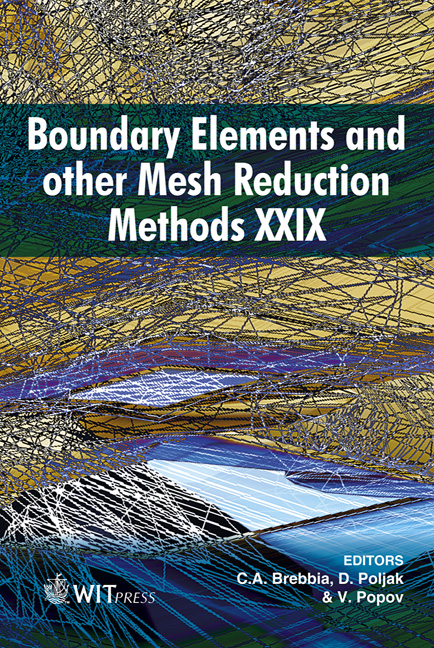Coupled FEM-BEM Crack Growth Analysis
Price
Free (open access)
Transaction
Volume
44
Pages
10
Published
2007
Size
671 kb
Paper DOI
10.2495/BE070261
Copyright
WIT Press
Author(s)
L. Zhang & R. A. Adey
Abstract
The increasing interest in large structure fracture analysis has heightened the need for efficient numerical computational tools suitable to predict crack propagation. While a sub modelling approach can be used in some cases it does not take into account the redistribution of the loads in the structure thus requiring a large part of the structure to be included in the crack growth model. Generally large structures are modelled with finite element methods (FEM) because of the many varied types of structural element. Modelling crack growth with FEM results in a particularly complex remeshing process as the crack propagates. Hence, self-adaptive remeshing is one of the major features that must be incorporated in the construction of a computational tool to properly perform crack propagation analysis with the FE method. The boundary element method (BEM) has attracted lots of attention in the field of fracture mechanics as it simplifies the meshing process and has the ability to accurately represent the singular stress fields near the crack front. One challenge is how the two methods can work together efficiently for a large structure. A new FEM-BEM method is therefore proposed to perform such crack growth analyses. This paper describes the methodology of a coupled FEM-BEM crack growth analysis for a large scale structure. Both finite element software ABAQUS and boundary element software BEASY were used in the analysis. Several examples are presented at the end of the paper including crack growth in a gear tooth and in a stiffened panel respectively. Keywords: finite element, boundary element, coupling method, fracture mechanics, crack growth, stress intensity factor.
Keywords
finite element, boundary element, coupling method, fracture mechanics, crack growth, stress intensity factor.





